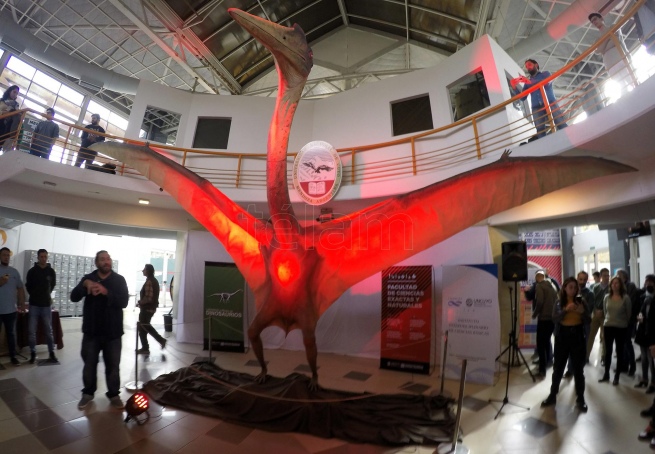Fossil remains of a species of flying reptile between 250 and 66 million years old and nine meters long, which according to researchers is the largest in South America, was presented by scientists from the Faculty of Exact and Natural Sciences and the Institute Interdisciplinary of Basic Sciences of the National University of Cuyo (Uncuyo), informed that house of studies.
It is a “pterosaurs” (flying reptiles) an extinct order of flying archosaur sauropsids that they existed during almost the entire Mesozoic Era and that they were the first vertebrates to conquer the air, explained La Uncuyo.
Its wings were formed by a complex membrane supported by the fourth finger of the hand, which was hypertrophied.

The dinosaur, baptized “Thanatosdrakon amaru” was presented in the auditorium of that faculty, in the San Martín Park in the city of Mendoza by Bernardo González Riga and Leonardo Ortiz, responsible for the discovery and members of the Dinosaur Museum and Laboratory.
The bones Thanatosdrakon fossils were found in outcrops located in the southern provincein a deposit near the Colorado River, in rocks from the end of the Cretaceous Period, whose age is estimated at 86 million years.
The fossil remains were found and preserved in a rescue procedure carried out during civil works, for which the researchers highlighted the importance of heritage protection actions during the execution of works in sites with high paleontological potential.

The exceptionally preserved remains belong to the axial skeleton (vertebrae) and the appendicular skeleton (bones of the forelimbs and hindlimbs) of two specimens.
“Pterosaurs were a very unique group of animals that they lived from the Triassic to the Cretaceous and represent the first vertebrates that acquired the ability to fly actively. They are generally confused with dinosaurs, a closely related group.Ortiz said.
The Mesozoic Era is known as “the age of reptiles” for being the dominant group of vertebrates on land and seas and spread between 250 and 66 million years old. During that time the large reptiles known as dinosaurs had their heyday.



















